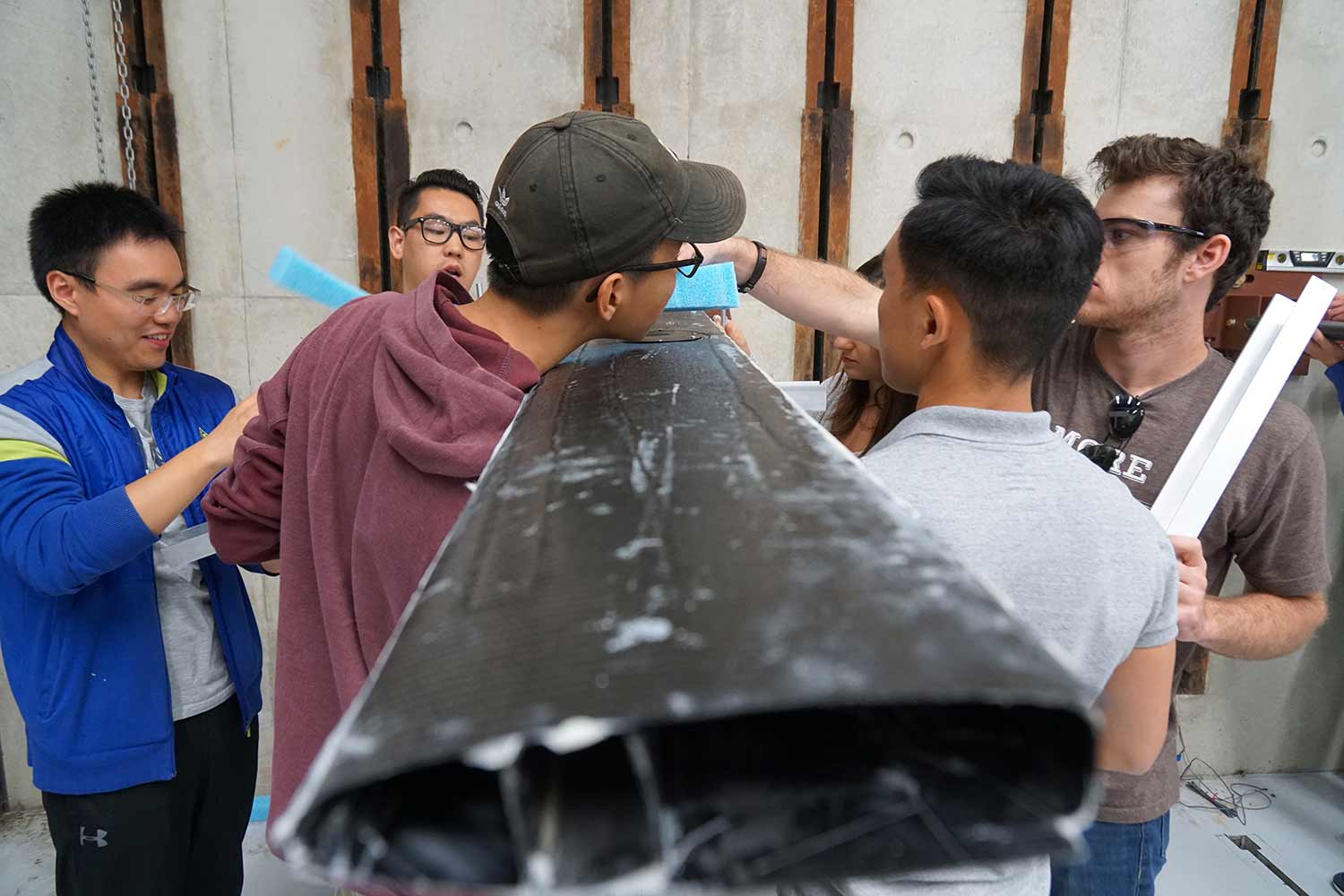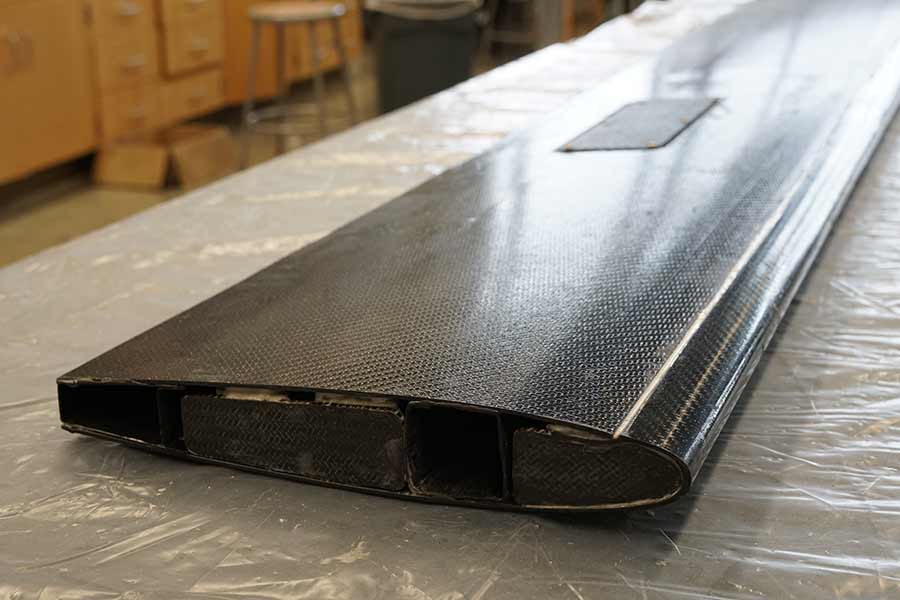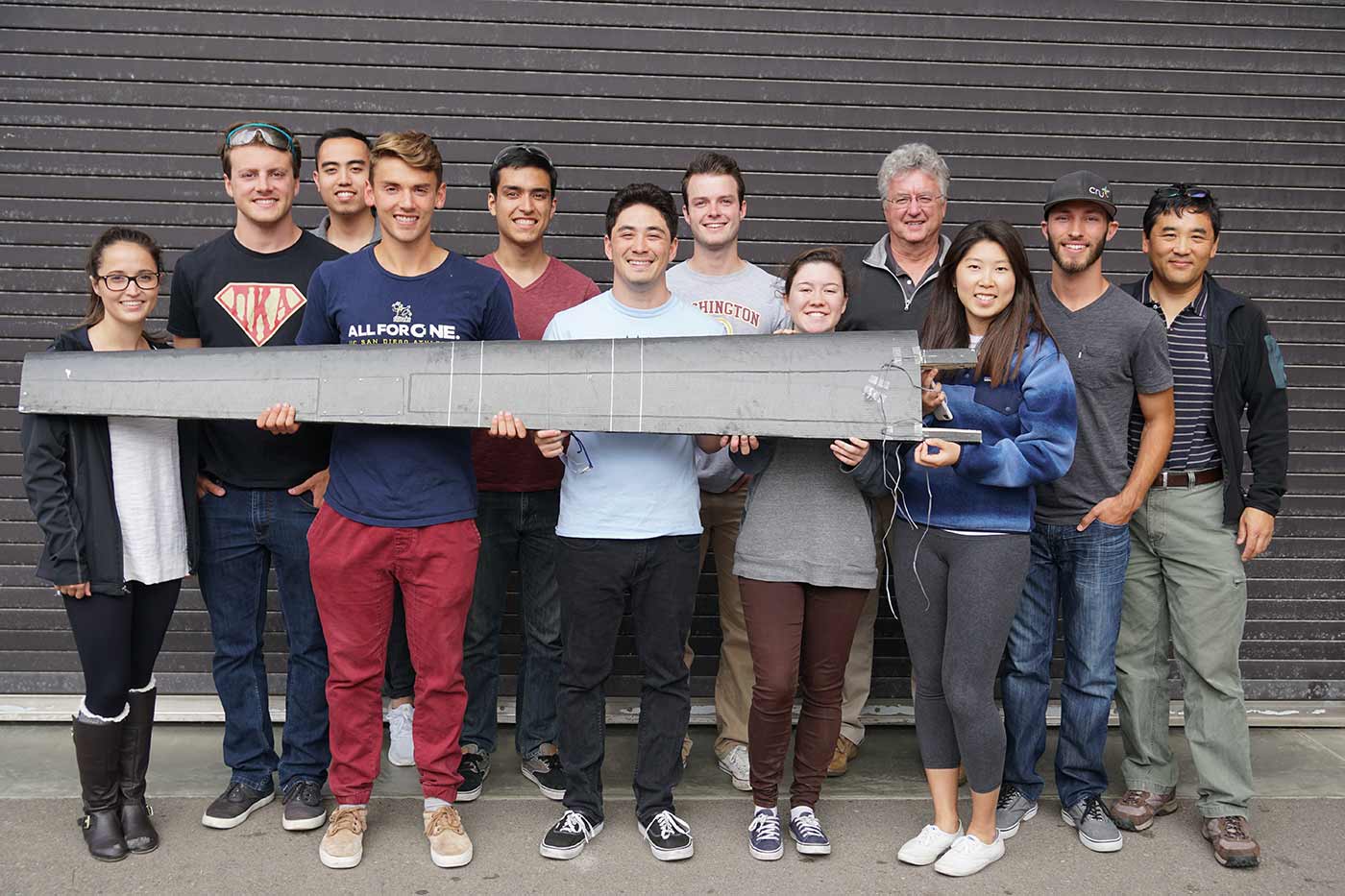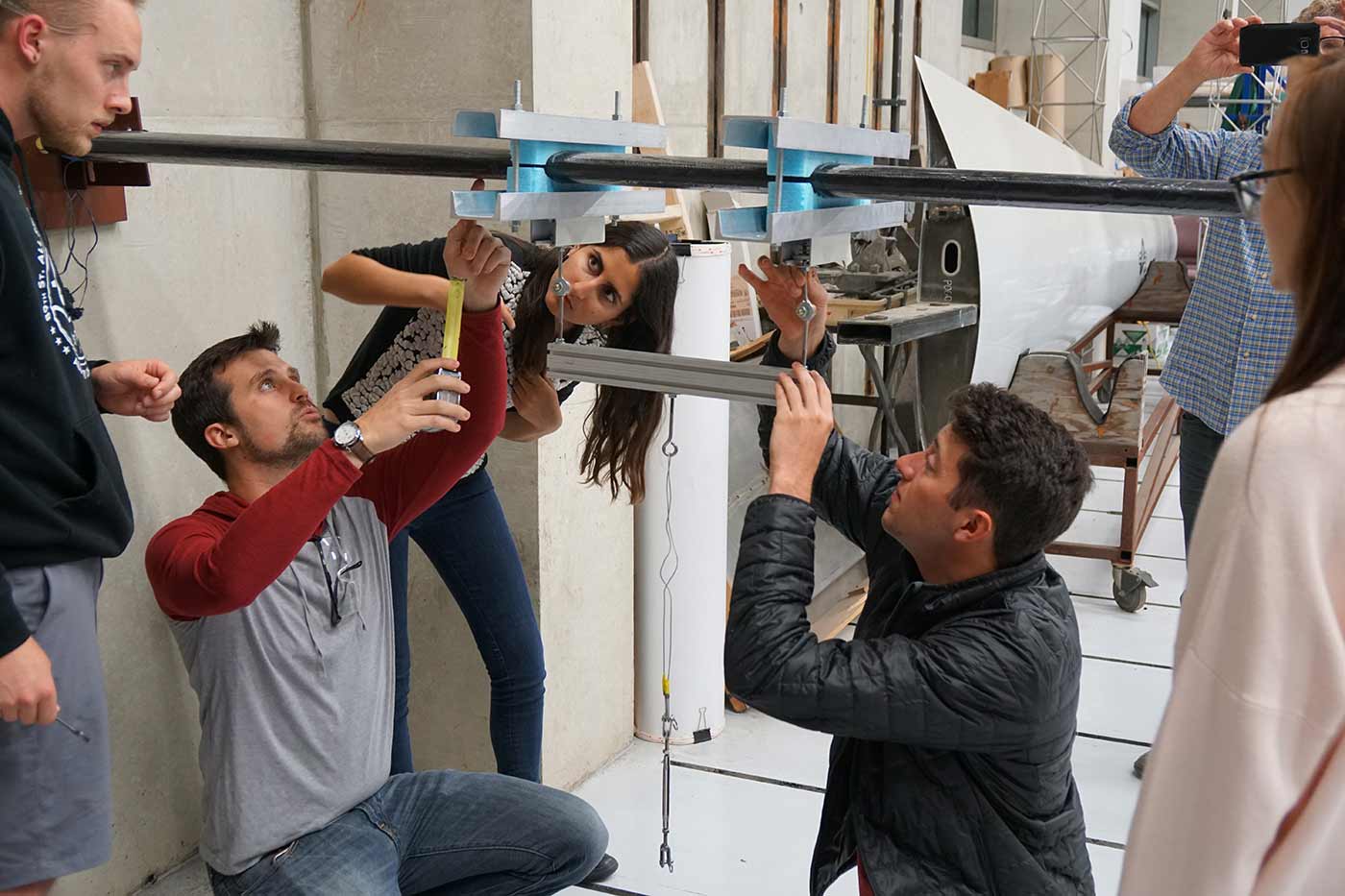
By:
- Deborah L. Jude
Published Date
By:
- Deborah L. Jude
Share This:

Structural engineering students designed, built, and tested an unmanned aerial vehicle wing as part of a new hands-on class.
Structural Engineering Students Design, Build and Test Unmanned Aerial Vehicle Wings
Structural engineering students got an opportunity to test their skills at creating unmanned aerial vehicle wings out of composite materials as part of a new structural engineering senior design class at UC San Diego. The class, called SE143, includes all three stages of the industrial aircraft wing production cycle—designing, building and testing.
As part of a complete revamping of the Jacobs School of Engineering Structural Engineering Department curriculum, undergraduates in the department now have the option to specialize in one of four areas: civil structures, aerospace structures, structural health monitoring, or geotechnical engineering. Previously, all structural engineering seniors took the same senior design class. Now, Hyonny Kim and John Kosmatka, both professors of structural engineering, have come up with the new SE143 senior design class focused on aerospace structures.

UAV wing made of composite materials designed, analyzed, and built by students.
“We’ve wanted to have a class where students could design, build and test a high-performance, lightweight, complex airplane wing made with composite materials for a while, since that’s what modern commercial aircraft are made of,” said Kim. “This class prepares students well for working for an aerospace company helping to develop composite structures.”
The students were challenged to take a fictitious existing aircraft from “K2 Aeronautical Systems” and increase the range of their unmanned aircraft system by increasing the maximum takeoff weight—including adding 20 pounds of batteries. The task of developing a set of larger wings that could support the increased weight while improving aerodynamic efficiency was a perfect challenge for the senior design class.
To make the class as representative of skills demanded by industry as possible, Kim and Kosmatka require the students’ designs to obey airworthiness rules and regulations spelled out in the FAA’s Federal Aviation Regulations. The course also mimics industry design and development process by featuring multiple design reviews, deadlines, and presentations. Industry professionals participated in the design reviews to provide valuable feedback.

The team with lightest-weight wing (5.5 lbs) poses with structural engineering professors John Kosmatka and Hyonny Kim.
“The wings are 7 feet long, and highly complex,” said Kosmatka. “In order to build the wings from scratch, students needed to exercise creativity and figure out the tooling. Not only did the students get hands-on experience designing airplane wings, they also had a chance to apply the theory they learned during their four years in the program by conducting in-depth computer analyses to predict where the wing would fail during testing.”
Getting hands-on experience is a key aim of new classes that are being implemented at every level of the Jacobs School curriculum as part of the Dean’s Experience Engineering Initiative. You can read more about that initiative here.
Having been given the freedom to choose how to design the wings, the five teams each produced quite different wings, One team used ribs instead of a honeycomb structure. “We chose to design for manufacturability,” said structural engineering undergraduate Jeff Amirian, who is interning at Aerojet Rocket this summer, working on composite structures. “Our computer simulation showed buckling before we met the load requirements, so we optimized the spacing between the ribs so we could increase the load” to avoid buckling.

Students mount the loading apparatus to their wing in preparation for the test.
Another team chose to focus on building an aerodynamically efficient wing. According to team lead Samuel Au, the team went through multiple iterations of airfoil designs and sizings to make sure the wing could handle the heaviest load experienced during flight. They also made sure to account for manufacturing defects since the wing would be built by hand.
“Our team members came from clubs such as Formula SAE and Steel Bridge, and internships with UTC Aerospace Systems, Northrop Grumman, and NAVAIR, to name a few,” said Au. “Taking our knowledge from our four years at UC San Diego with our club and internship experience, we were able to combine our engineering intuition and hands-on experience to build a full-scale UAV wing made completely from pre-impregnated carbon fiber composites.”
This inaugural year of the new course, the project topic was motivated by the fictitious company “K2 Aeronautical Systems”. If you are an aerospace company interested in becoming more involved in SE143, please contact Hyonny Kim at .(JavaScript must be enabled to view this email address) or John Kosmatka at .(JavaScript must be enabled to view this email address).
Share This:
You May Also Like
Stay in the Know
Keep up with all the latest from UC San Diego. Subscribe to the newsletter today.


